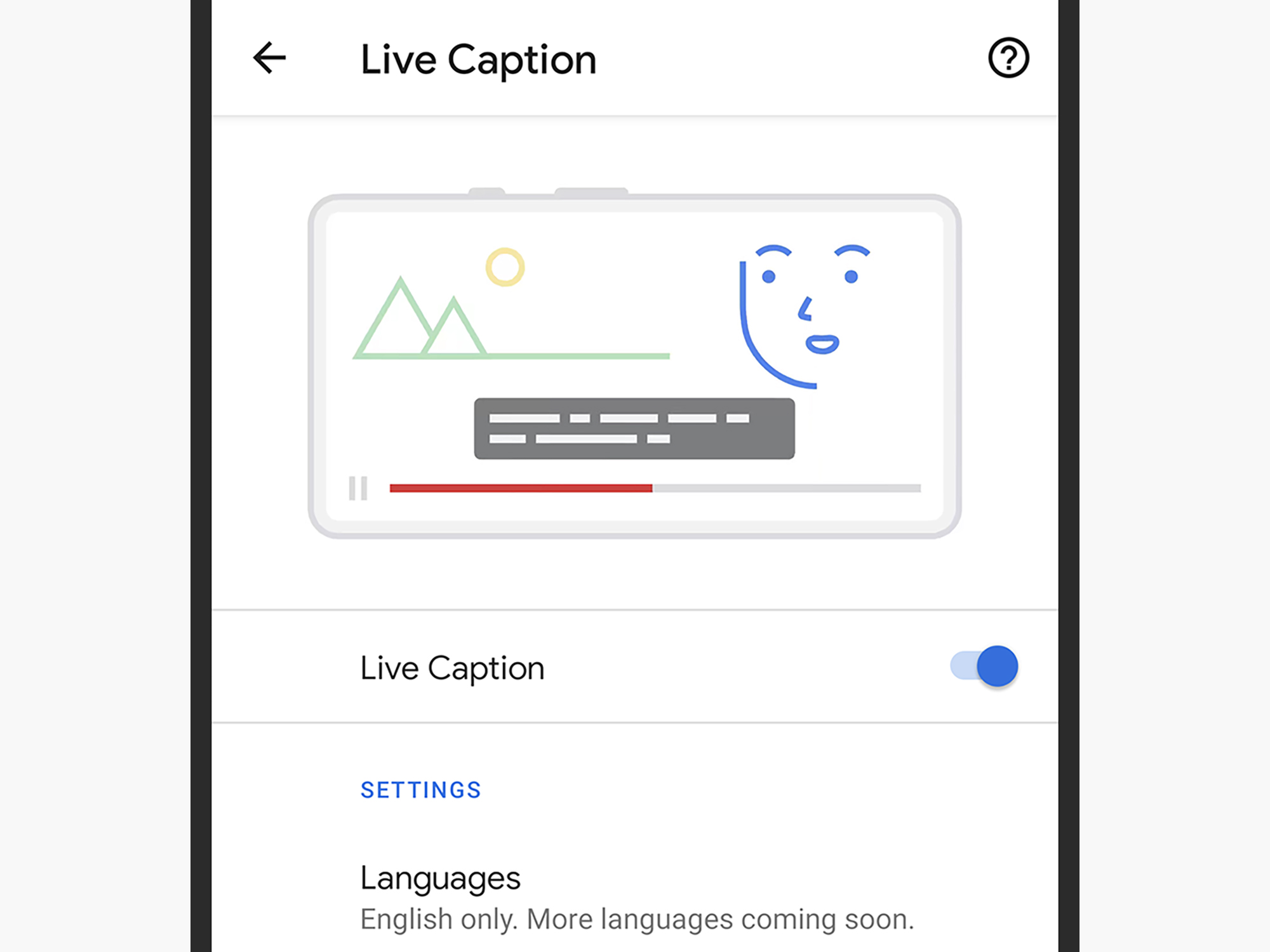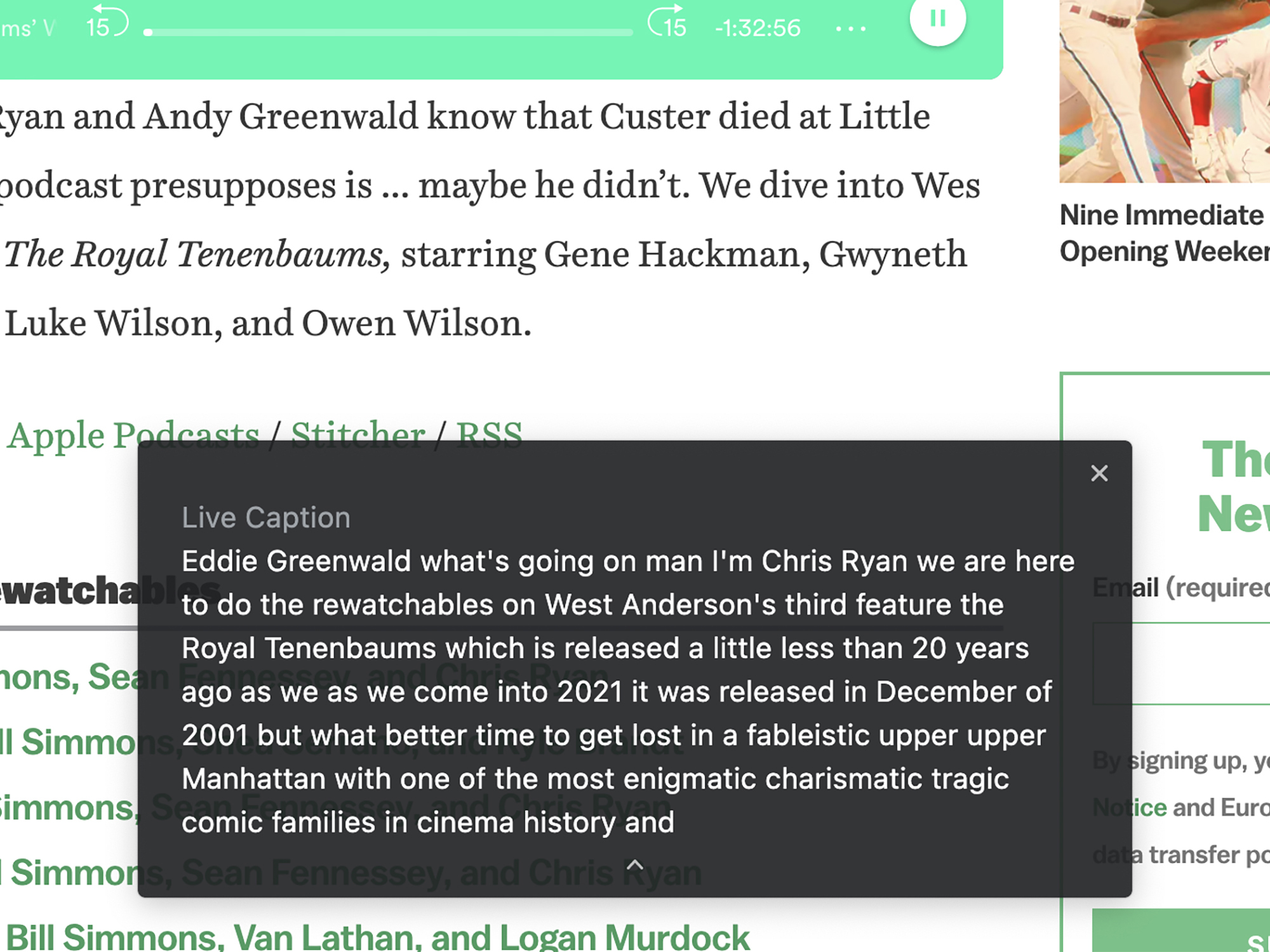

Google Live Caption works across any app, using a high level of machine learning to put text captions on audio and video files in real time. It’s useful for the hundreds of millions of people who are deaf or hard of hearing, but it can also help anyone riding in a loud subway car, sitting in a silent library room, or listening to something they simply can’t understand.
This feature, launched in 2019, stays and runs on whatever device you’re using, so it’ll seamlessly caption everything from video calls to podcasts—instantly. It also doesn’t need to ferry data to and from the cloud, so it works offline, too. It’s quick, simple, and secure.
Use Live Caption on your phone

Live Caption first appeared as an exclusive for Google Pixel phones and it currently works on the 2017 Pixel 2 and any Pixel phone launched since. The feature now also works on a select number of other Android phones, including the Galaxy S series from Samsung and the flagship OnePlus phones, but it’s not available on the iPhone.
If you’re using a Google Pixel, open up the main Android Settings app and choose Accessibility, then Live Caption. On Samsung handsets, it’s under Accessibility, Hearing enhancements, then Live Caption in Settings, while on OnePlus phones you’ll pick System, Accessibility, and Live Caption from Settings. If your Android phone offers Live Caption, it should be somewhere in the accessibility settings.
Beyond turning Live Caption on and off, you can configure various options like choosing to replace profanity with asterisks or whether or not sound labels (describing music, laughter, and applause) appear on screen. You can also decide if you want a Live Caption icon to appear in the volume control pop-up that appears when you adjust it—it will show up as a small icon underneath the volume slider, and offers another way to toggle the feature on or off.
Once Live Caption is enabled, it should show up automatically whenever audio or video is playing in any of the apps on your phone. Double-tap on the captions overlay to switch between a larger and a smaller window size, or tap and drag on the captions to move them to a different position on screen.
You can adjust the size and color of the captions, but this is under a separate menu: Caption preferences in Accessibility. You can pick one of the suggested color combinations for the subtitles, or create your own, and as you make changes to the look of the subtitles you can see a preview of how they’ll actually look on screen
Use Live Caption on your computer

Recently, Google added Live Caption as a feature in the latest version of its Chrome web browser (version 89 and later). That means you can use it for audio and video playing inside Chrome on Windows, macOS, and Linux. At the time of writing the feature isn’t available on Chrome OS, but it should be arriving soon.
From inside Google Chrome, click the three dots in the top right corner, then choose Settings, Advanced, and Accessibility. Turn on the Live Caption toggle switch, and Chrome will download the necessary speech recognition files to your computer
Click Caption preferences to set the size and appearance of the subtitles that show up on screen—you’ll actually get sent to the captions setting screen for whatever operating system you’re using, so you’ll be editing the appearance of the captions for every program on your computer, not just Chrome.
Load up any video or audio file in Chrome, and you’ll see the automatic captions appear during playback. Click the arrow at the bottom of the captions box to switch between a smaller and a larger window, or click and drag the window around to reposition it. To hide the captions, click the X in the corner of the subtitles window.
Live Caption is still a work in progress, and the subtitles can be a bit hit or miss—especially with accents or if music is playing. The extra processing it requires can also drain your device’s battery faster. All that said, it’s still an impressive and polished technology that can come in handy in a wide variety of scenarios.
